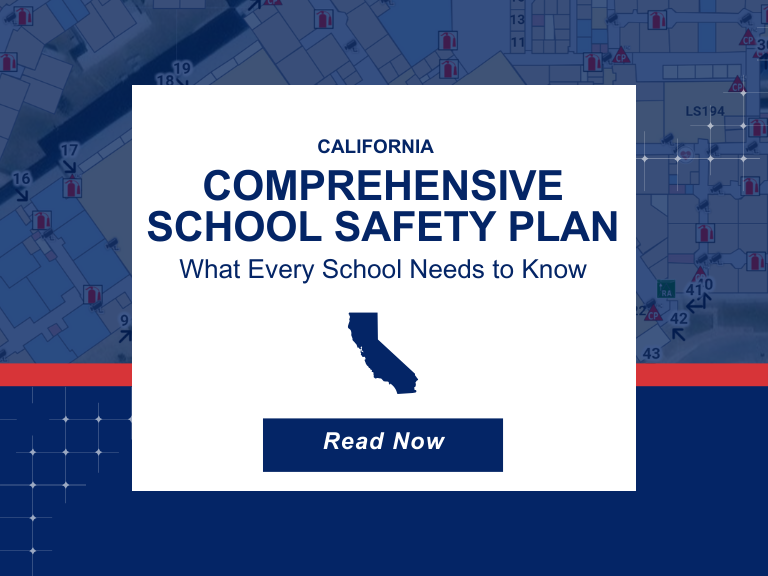Critical Incident Mapping & School Safety: Ricky and Alyssa’s Law Explained
Introduction
In an era where school safety is paramount, legislative measures like Alyssa’s Law and the proposed Ricky and Alyssa’s Law have been introduced to enhance security in schools. These laws focus on critical incident mapping and silent panic alert systems to improve emergency response times and coordination.
How Alyssa’s Law & Ricky and Alyssa’s Law improve School Safety
Alyssa’s Law is named in memory of Alyssa Alhadeff, a 14-year-old student who tragically lost her life during the 2018 shooting at Marjory Stoneman Douglas High School in Parkland, Florida. The law mandates the installation of silent panic alarms in schools, directly linked to local law enforcement agencies, to expedite response times during emergencies. Several states, including Texas, have adopted Alyssa’s Law, requiring public and charter schools to equip classrooms with silent panic alert technology. This technology ensures immediate communication with emergency services, including law enforcement, fire departments, and health departments.
What is Ricky and Alyssa’s Law? How it Supports Critical Incident Mapping
In Georgia, the tragic loss of Coach Richard “Ricky” William Aspinwall during a shooting at Apalachee High School in September 2024 prompted further legislative action. Senator Jason Anavitarte introduced Senate Bill 17, known as “Ricky and Alyssa’s Law,” aiming to enhance school safety measures. This proposed legislation requires all public schools to install mobile panic alarm systems directly linked to emergency responders and law enforcement. Additionally, it mandates the procurement of comprehensive school mapping data for each educational institution within the state’s jurisdiction. These measures are designed to ensure that first responders have immediate access to accurate information, facilitating swift and coordinated actions during emergencies.
Critical Incident Mapping: A Must-Have for School Safety Response
Critical Incident Mapping plays a crucial role in school safety, helping first responders navigate school campuses more efficiently. By providing accurate school mapping, including floor plans and access points, emergency teams can significantly reduce response times.
In Texas, House Bill 3 requires critical incident mapping data for all schools, ensuring law enforcement and fire departments have immediate access to vital school layouts. Similarly, Ricky and Alyssa’s Law in Georgia mandates comprehensive school mapping to enhance crisis response capabilities.
Implementing Safety Measures in Schools
To comply with these legislative requirements, schools are collaborating with safety solution providers to integrate advanced technologies. For instance, CENTEGIX offers the CrisisAlert™ system, a mobile panic button solution that aligns with Texas’ mandate for silent panic alert technology. This system empowers staff to initiate immediate alerts during emergencies, ensuring rapid communication with first responders. The integration of such systems with critical incident mapping tools provides a comprehensive approach to school safety, enabling real-time situational awareness and efficient emergency management.
Enhancing School Safety Mapping Through Legislation and Technology
The enactment of laws like Alyssa’s Law and the proposed Ricky and Alyssa’s Law underscores a growing commitment to bolstering school safety through legislative action and technological innovation. By mandating the implementation of silent panic alarms and critical incident mapping, these laws aim to create secure educational environments where students and staff can focus on learning without fear. As more states consider similar legislation, the integration of advanced safety technologies in schools is poised to become a standard practice, reflecting a nationwide dedication to protecting educational communities.
Learn more about GeoComm School Safety Critical Incident Mapping
Read our article on the importance of Critical Incident Mapping and GIS data
Speak to your Regional Consultant for a free demo
Frequently Asked Questions (FAQs)
Q1: What is Alyssa’s Law and how does it improve school safety?
A1: Alyssa’s Law mandates the installation of silent panic alarms in schools, linking them directly to local emergency responders. The goal is to reduce response times during school emergencies, ensuring law enforcement, fire, and medical personnel can act swiftly. Several states, including Texas, have adopted this law to enhance school security.
Q2: What is Ricky and Alyssa’s Law and how does it differ from Alyssa’s Law?
A2: Ricky and Alyssa’s Law is a proposed school safety law in Georgia, named after Coach Ricky Aspinwall and Alyssa Alhadeff. While it also requires mobile panic alarms, it goes further by mandating Critical Incident Mapping, providing emergency responders with detailed digital maps of school campuses to navigate and respond more effectively during a crisis.
Q3: Why is Critical Incident Mapping important for school safety?
A3: Critical Incident Mapping ensures first responders have accurate school layouts, including floor plans, entry/exit points, and high-priority locations. This technology enables faster and more coordinated emergency response, reducing confusion and potential delays in high-stress situations.
Q4: How does Ricky and Alyssa’s Law impact public schools in Georgia?
A4: If passed, Ricky and Alyssa’s Law will require all public schools in Georgia to:
- Enhance crisis communication between schools, first responders, and safety agencies.
- Install mobile panic alarm systems connected to law enforcement.
- Implement comprehensive school mapping technology for emergency responders.
Q5: How can schools comply with Ricky and Alysssa’s Law?
A5: Schools can comply with these laws by:
- Ensuring first responders have real-time access to school layouts for emergency preparedness.
- Partnering with safety technology providers like GeoComm to implement Critical Incident Mapping.
- Installing silent panic alarm systems like CENTEGIX CrisisAlert™ to meet state mandates.
Q6: How can my school implement critical incident mapping and panic alert systems?
A6: Schools can start by:
- Training staff on how to use school safety systems effectively.
- Conducting a safety assessment with GeoComm to understand mapping needs.
- Installing panic alert technology that complies with state laws.
Speak to your Regional Consultant for a free demo


